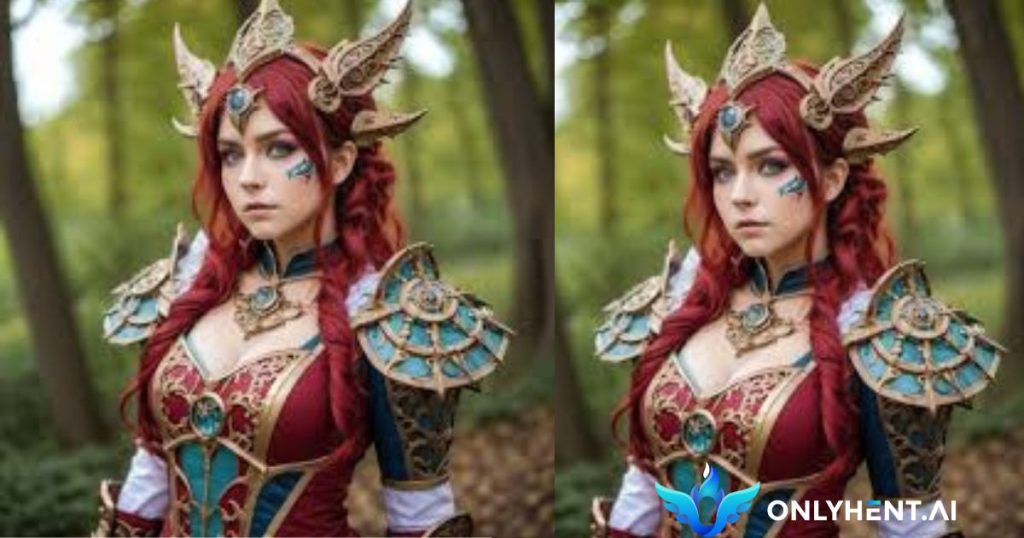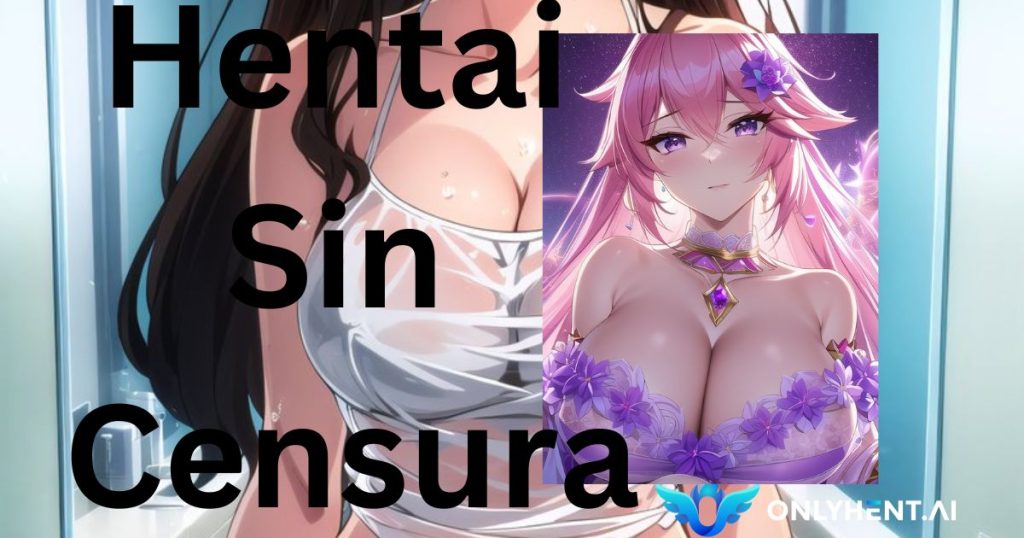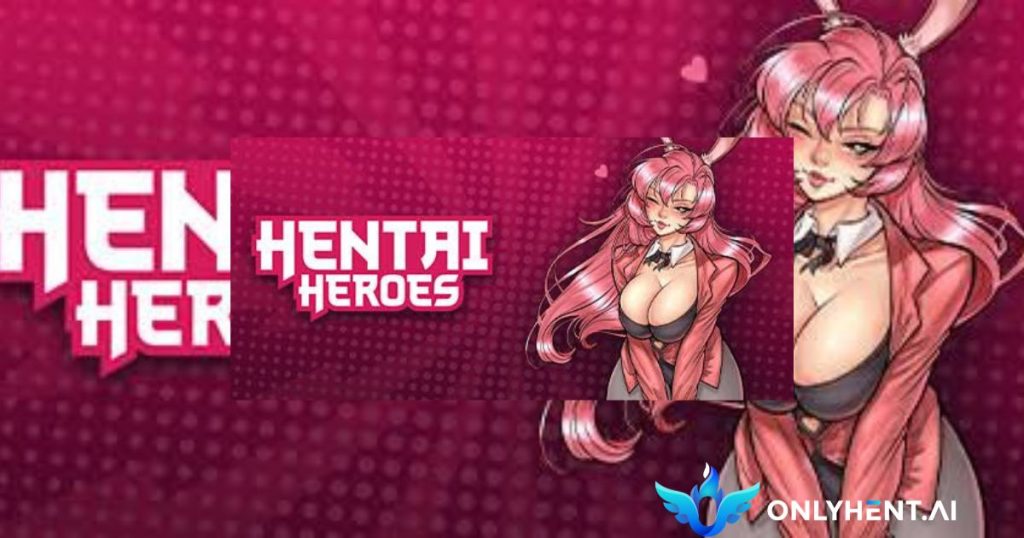Hentai, a term rooted in the vibrant world of Japanese manga and anime, represents explicit, sexually explicit, or pornographic content within these mediums. With its origins deeply embedded in Japan, hentai has managed to transcend cultural boundaries and capture the attention of enthusiasts worldwide. This article explores the realm of hentai, exploring its origins, its cultural impact in different regions, and the complex perceptions and debates that surround this genre.
Definition and Origin
The term “hentai” finds its roots in Japanese, where it translates to “perverted” or “abnormal.” In the context of manga and anime, it refers to a genre characterized by explicit sexual content, often featuring exaggerated characters and fantastical scenarios. While its literal translation implies deviance, within the realm of Japanese popular culture, it stands as a distinct genre, appreciated by a niche audience.
The emergence of this art can be traced back to early Japanese erotic art and literature. Over time, with the rise of manga and anime in the 20th century, hentai found its place within these mediums, catering to audiences seeking more explicit and adult-oriented content. It evolved from traditional Japanese art forms, incorporating elements of fantasy, imagination, and often, taboo themes.
Brief Overview of its Cultural Impact in Different Regions
Hentai in Japan: A Cultural Perspective
Within Japan, it occupies a unique space in the expansive world of manga and anime. It is a genre that, while niche, has earned acceptance within Japanese society. Despite this acceptance, it faces stringent censorship laws, mandating the pixelation or obscuring of genitalia, reflecting the delicate balance between artistic expression and legal compliance.
Moreover, the artists in Japan have pushed the boundaries of creativity, infusing their works with intricate storylines and complex characters; challenging the notion, that it is purely pornographic. This artistic evolution has contributed to the genre’s recognition as a legitimate form of expression, albeit one that remains controversial.
Hentai Outside Japan: Niche Enthusiasts and Legal Regulations
Beyond Japan, it has garnered a dedicated fanbase, particularly among anime and manga enthusiasts. However, its reception varies significantly due to legal regulations and societal attitudes toward explicit content. In some Western countries, legal restrictions limit the distribution and possession of such materials, creating a subculture of enthusiasts who explore the genre through online communities and specialized forums.
Despite these limitations, it has influenced mainstream media, with traces of its themes found in certain anime series. The genre’s impact, while subtle, highlights its ability to permeate global popular culture, albeit within specific niches.
Hentai in Japan: A Cultural Perspective

Historical Background in Japanese Manga and Anime
as a genre, finds its roots intertwined with the rich history of Japanese art and literature. The origins of hentai can be traced back to early forms of erotic art known as shunga, which emerged during the Edo period (1603-1868). Shunga, a traditional form of Japanese erotic woodblock printing, depicted explicit sexual scenes with a focus on the aesthetics of pleasure and intimacy.
With the advent of manga and anime in the 20th century, it started to take shape within these mediums. Early manga artists began experimenting with explicit themes, pushing the boundaries of artistic expression and societal norms. This evolution led to the emergence of manga and anime, catering to audiences seeking more adult-oriented and provocative content.
Acceptance and Perception of Hentai within Japanese Society
Within Japanese society, it exists as a niche genre embraced by a specific audience. While it is not widely mainstream, hentai enjoys acceptance within certain circles, particularly among manga and anime enthusiasts. Its acceptance is rooted in the understanding that hentai represents a distinct category of entertainment, catering to specific tastes and interests.
However, despite its acceptance within certain subcultures, hentai is still a topic of discussion and debate. Some view it as a natural extension of artistic freedom and expression, while others criticize it for its explicit content and potential societal impact. This dichotomy of acceptance and criticism highlights the complex nature of this art within Japanese society.
Censorship Laws and Their Impact on Hentai Content
One of the defining aspects of hentai in Japan is the presence of strict censorship laws. Japanese law prohibits the explicit depiction of genitalia in obscene materials, including this art. As a result, hentai content often features censorship in the form of pixelation or mosaics over genital areas to comply with these regulations. This censorship adds a layer of complexity to its production, as artists must find creative ways to convey explicit themes while adhering to legal requirements.
Despite these censorship laws, the artists have developed unique artistic techniques to work within these constraints, emphasizing suggestive imagery, body language, and facial expressions to convey the desired emotions and scenarios without violating the law.
Artistic Aspects of Hentai: Exploring Themes and Narratives
Beyond its explicit content, it often explores a wide range of themes and narratives. While some works focus solely on sexual fantasies, others delve into complex storylines, character development, and emotional relationships. Themes such as romance, fantasy, science fiction, and horror are not uncommon in these narratives. This diversity displays the genre’s ability to encompass various genres and engage audiences on multiple levels.
Additionally, the artists have been known to challenge societal norms and address taboo subjects, using their work as a medium for social commentary and critique. In doing so, they elevate this from mere pornography to a form of artistic expression that reflects and comments on various aspects of Japanese society and human nature.
Hentai Outside Japan: Niche Enthusiasts and Legal Regulations
Cult Following: Enthusiasts in Western Societies
In Western countries, hentai has cultivated a dedicated fanbase, albeit relatively smaller compared to mainstream anime enthusiasts. These fans appreciate for its unique art style, intricate narratives, and the freedom it offers to explore themes often considered taboo in conventional media. Despite its explicit nature, its enthusiasts often view the genre beyond mere pornography, appreciating the creativity and imagination embedded in the stories and characters.
Legal Regulations and Restrictions on Hentai in Various Countries
Legal regulations regarding explicit content vary widely across Western countries. Some nations, like the United States and Canada, have stringent laws governing the distribution and possession of sexually explicit materials. Consequently, retailers and online platforms are cautious about offering explicit content to avoid legal repercussions. In contrast, other countries have more lenient regulations, allowing easier access to hentai materials.
These disparities in regulations create challenges for both consumers and creators. Fans in regions with strict laws may resort to online platforms hosted in countries with more relaxed regulations, leading to a complex landscape of legal ambiguity and ethical dilemmas.
Online Communities and Forums: Connecting Hentai Fans Worldwide
The internet has given rise to a plethora of online communities and forums where hentai enthusiasts can connect, share content, and engage in discussions. Specialized websites, forums, and social media platforms provide a safe space for fans to express their passion openly. These platforms foster a sense of community among like-minded individuals, enabling them to share recommendations, and fan art, and engage in debates about various hentai works.
Hentai and Mainstream Anime: Blurring Boundaries
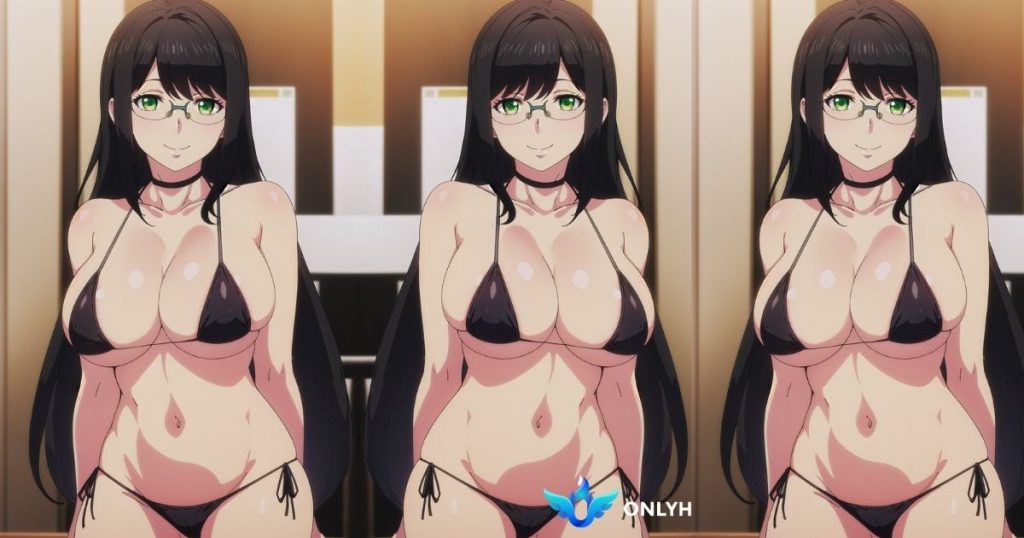
Instances of Hentai Elements in Mainstream Anime Series
In recent years, the influence of hentai on mainstream anime has become increasingly evident. While explicit content is rarely directly depicted in mainstream series due to wider audience appeal, subtle hints and themes inspired by hentai often, find their way into the narrative. Instances of suggestive scenes, provocative dialogues, or characters exploring intimate relationships have become more common, reflecting the gradual permeation of its elements into mainstream storytelling.
How Mainstream Anime Adapts and Modifies Hentai Themes for Wider Audiences
Mainstream anime series often adapt and modify hentai themes to cater to a broader audience while retaining the essence of the original inspiration. For example, romantic relationships and sexual tensions between characters may be explored more openly, emphasizing emotional connections over explicit scenes. Themes like forbidden love, exploration of desires, and coming-of-age experiences, which are prevalent in this art, are integrated into mainstream anime with a focus on character development and plot progression.
Additionally, anime creators utilize creative storytelling techniques to imply explicit content without displaying it directly. They rely on symbolism, metaphors, and visual cues to convey intimate moments, allowing viewers to interpret the scenes based on their imagination. This approach enables mainstream anime to capture the essence of hentai themes while maintaining a level of ambiguity suitable for wider audiences.
Impact of Hentai on Character Design, Storytelling, and Animation Techniques in Mainstream Anime
The influence of hentai on character design, storytelling, and animation techniques in mainstream anime is profound. Characters in both genres often share similar physical traits, with exaggerated features and expressions that emphasize sensuality and allure. While character design in mainstream anime may not be as explicit as in this art, the influence is evident in the attention to detail and the portrayal of characters’ physical attributes.
In terms of storytelling, hentai-inspired narratives have contributed to the exploration of more mature and complex themes in mainstream anime. Themes such as love triangles, unrequited love, and complicated relationships are often delved into, providing depth to the characters and their interactions. This nuanced storytelling approach, borrowed from this art, adds layers to the narrative, making it more engaging and relatable to older audiences.
Animation techniques in mainstream anime have also been influenced by hentai, particularly in scenes involving romantic or intimate moments. Animators employ fluid and expressive movements to convey emotions and create a sense of intimacy between characters. These techniques enhance the overall viewing experience, immersing the audience in the emotional journey of the characters.
The Artistic Merit of Hentai: Beyond Pornography
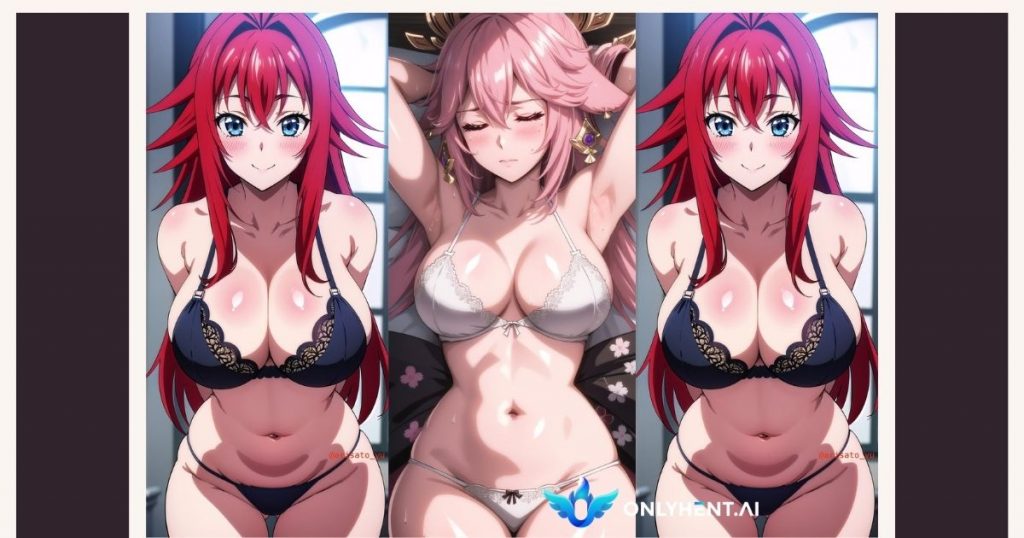
Exploration of Hentai as an Art Form: Analyzing Styles and Techniques
Hentai, despite its explicit content, has evolved into a unique and intricate art form. Artists within this genre employ a wide array of styles and techniques, displaying their creativity and skill. From vibrant, exaggerated character designs to detailed backgrounds, artists often exhibit exceptional mastery over anatomy, expressions, and emotions. The use of various artistic techniques, such as shading, perspective, and composition, enhances the visual appeal and storytelling within these works. The genre’s ability to convey complex emotions and narratives through visual art demonstrates the artistic depth present within hentai.
Renowned Hentai Artists and Their Contributions to the Genre
Several hentai artists have made significant contributions to the genre, elevating it beyond mere pornography and into the realm of high-quality art. These artists often experiment with diverse styles, pushing the boundaries of traditional artistic norms. Their unique perspectives and innovative approaches have inspired aspiring artists and enthusiasts alike.
For example, artists like Satoshi Urushihara are celebrated for their intricate character designs and attention to detail. Urushihara’s work often combines elements of fantasy and sensuality, creating visually stunning and emotionally resonant pieces. Similarly, artists like Yamatogawa are recognized for their ability to capture subtle nuances of emotions in characters, adding depth to their narratives. These artists, among many others, have played a crucial role in shaping the artistic landscape.
Future Trends and Evolution of Hentai
Trends in Hentai Content and Themes: Evolution over the Years
The landscape of hentai content has experienced significant evolution over the years, reflecting changing societal norms and audience preferences. Initially centered on explicit scenes, modern hentai has diversified its themes and narratives. While traditional genres like romance and fantasy persist, there is a growing emphasis on character development, intricate storylines, and exploring complex emotions. Themes of consent, relationships, and emotional connections have gained prominence, making hentai more than just a medium for sexual fantasies. The genre’s ability to adapt to contemporary societal attitudes has ensured its continued relevance and appeal to a broader audience.
Impact of Technological Advancements on the Creation and Consumption of Hentai
Technological advancements, especially in the realm of animation and virtual reality, have revolutionized the creation and consumption of hentai. High-quality animation, sophisticated graphics, and immersive virtual reality experiences have elevated this content to new heights. Artists can now explore intricate details, lifelike movements, and immersive scenarios, enhancing the overall viewing experience.
Additionally, online platforms like blog.onlyhent.ai have emerged, providing a centralized hub for enthusiasts to access a wide range of content conveniently. These advancements have not only empowered artists to create more captivating works but have also made hentai more accessible and engaging for consumers.
Speculations on the Future Acceptance and Integration of Hentai in Mainstream Media and Art
As societal attitudes toward explicit content continue to evolve, there are speculations about the future acceptance and integration of hentai into mainstream media and art. With the growing recognition of hentai as a legitimate art form, there is a possibility that it may find its place in mainstream galleries, exhibitions, and art events. Moreover, as conversations around artistic freedom and diverse expressions gain momentum, mainstream media might incorporate subtle hentai-inspired elements in their storytelling, similar to what we have seen in some anime series. The key lies in promoting a nuanced understanding beyond its explicit nature, emphasizing its artistic, narrative, and emotional dimensions.
The Role of Blog.onlyhent.ai: A Hub for Hentai Enthusiasts
Platforms like blog.onlyhent.ai play a crucial role in shaping the future of hentai consumption. By curating a diverse collection of high-quality content, the platform caters to enthusiasts seeking a wide range of themes and styles. It creates a community where artists and fans can interact, share their work, and engage in discussions. Such platforms contribute to the normalization of hentai as a form of entertainment and artistic expression. As they continue to evolve, these hubs may foster greater understanding and acceptance of hentai, further integrating it into mainstream media and art.
Conclusion
In conclusion, exploring the cultural impact of hentai reveals a complex tapestry of artistic expression, societal attitudes, and global influence. While facing challenges due to censorship and societal stigma, it has managed to evolve into a legitimate art form, pushing creative boundaries and inspiring mainstream media. Its subtle integration into mainstream anime signifies a shift in societal acceptance, recognizing its influence on storytelling, character design, and animation techniques. Despite varying legal landscapes, dedicated online communities have fostered a global appreciation for the hentai, allowing enthusiasts to engage in nuanced discussions and challenge stereotypes.
For creators looking to generate this content, understanding the genre’s diverse themes, narratives, and artistic styles is crucial. It is essential to approach this form of expression with respect for both the audience and the art itself. Platforms like OnlyHent.ai can serve as valuable resources, offering insights into the best hentai series and providing inspiration for artists and enthusiasts alike. By interlinking with such platforms, creators can further enrich their understanding of the genre, promoting a healthy exchange of ideas and fostering a vibrant, inclusive hentai community.
- Hentai in Japan: A Cultural Perspective
- Hentai Outside Japan: Niche Enthusiasts and Legal Regulations
- Hentai and Mainstream Anime: Blurring Boundaries
- The Artistic Merit of Hentai: Beyond Pornography
- Renowned Hentai Artists and Their Contributions to the Genre
- Future Trends and Evolution of Hentai
- Speculations on the Future Acceptance and Integration of Hentai in Mainstream Media and Art
- Conclusion




